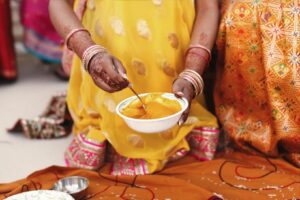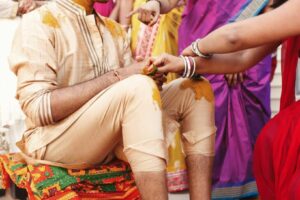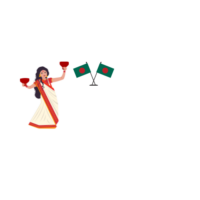Bengali culture, a vibrant tapestry of traditions and creativity, captivates with its rich history and artistic flair. Rooted in the eastern part of the Indian subcontinent, it encompasses the diverse practices of West Bengal and Bangladesh. This culture is renowned for its literature, music, and art, which have left an indelible mark on the world stage.
From the soulful melodies of Rabindra Sangeet to the intricate patterns of traditional sarees, Bengali culture celebrates both heritage and innovation. Festivals like Durga Puja and Pohela Boishakh bring communities together in joyous celebration, showcasing the region’s deep spiritual and cultural connections. Food, too, plays a central role, with dishes like macher jhol and mishti doi tantalizing taste buds.
Bengali Culture

Bengali culture, deeply rooted in the eastern Indian subcontinent, showcases a unique blend of tradition and innovation. This culture thrives in West Bengal and Bangladesh, representing a harmonious mix of art, literature, music, and cuisine. Significant contributions to the literary world come from figures like Rabindranath Tagore, whose works continue to inspire many.
Art permeates daily life in Bengali culture, with traditional crafts and modern artistry coexisting. Dance forms like Rabindra Nritya and Baul music illustrate the region’s dedication to preserving its artistic heritage. Festivals play a central role, with Durga Puja and Pohela Boishakh bringing communities together in vibrant celebrations.
Cuisine is a crucial aspect of Bengali identity. Iconic dishes like macher jhol (fish curry) and sweets like mishti doi (sweet yogurt) are staples that reflect the region’s rich culinary tradition. These foods are often enjoyed during family gatherings and special occasions, fostering community bonds.
Historical Background
Bengali culture emerged from a complex historical tapestry. Its ancient roots and diverse influences shape its current identity.
Ancient Origins
Bengali culture’s origins can be traced back to the ancient Vedic period. Early influences included Aryan settlers who introduced Sanskrit and early Hindu traditions. Evidence of Banga, an early kingdom, appears in ancient Indian texts and inscriptions. By the 3rd century BCE, the region was part of the extensive Maurya Empire, which brought Buddhism to Bengal.
Influence of Various Dynasties

Several dynasties contributed to Bengali culture’s rich heritage. The Gupta Dynasty (4th-6th centuries CE) saw a flourishing of arts and sciences, laying the groundwork for the region’s literary accomplishments. The Pala Dynasty (8th-12th centuries CE) fostered a Buddhist renaissance, influencing art and architecture. By the 13th century, the Sena Dynasty upheld Hindu traditions, which continued to shape societal norms.
Festivals and Traditions
Festivals and traditions form a vibrant part of Bengali culture, reflecting its rich spiritual and cultural heritage. They blend religion, art, and community, underscoring the shared values and festive spirit among Bengalis.
Major Religious Celebrations
Durga Puja stands as the most significant festival, attracting large crowds and elaborate celebrations. Celebrated in the Hindu month of Ashwin, it honors Goddess Durga’s victory over the buffalo demon Mahishasura. People decorate pandals (temporary structures) with intricate works of art, music, and dance.
Pohela Boishakh marks the Bengali New Year. Celebrated on April 14 or 15, it’s a time for reflection and new beginnings. The day features vibrant processions, traditional food like panta bhat (fermented rice), and cultural performances.
Eid-al-Fitr is paramount for Bengali Muslims, celebrated at the end of Ramadan. This festival involves communal prayers, charity, and feasting, emphasizing peace and unity.
Unique Cultural Traditions

Bengali weddings showcase vibrant rituals. Gaye Holud, a turmeric-enhancing ceremony, involves applying turmeric paste to the bride and groom, symbolizing purification and prosperity.
Bhaiphonta or Bhai Dooj celebrates the bond between brothers and sisters. Sisters apply a tilak on their brothers’ foreheads and exchange gifts, praying for their wellbeing.
The traditional practice of Nathikata involves making clay idols for religious and cultural ceremonies. Craftsmen pass down this skill through generations, preserving cultural heritage.
Charak Puja, celebrated in rural areas, highlights folklore and ancient customs. Participants fast and perform acrobatics, offering devotion to Lord Shiva.
A Rich Legacy
Bengali culture stands as a testament to the enduring power of tradition and innovation. Its rich history, vibrant arts, and diverse culinary offerings create a unique cultural identity that continues to inspire and influence globally. From the profound literary works of Rabindranath Tagore to the lively celebrations of Durga Puja, Bengali culture weaves a narrative of resilience and creativity. Its ability to balance ancient customs with modern expressions ensures that Bengali culture remains dynamic and relevant, fostering a sense of pride and unity among its people.

